You cannot do this. The architecture is not designed to operate at clock speeds over 20 MHz, there will be undefined behaviour.
The external clock sources are not multiplied inside the AVRs/ATtiny, they are only ever divided down. More advanced processors like the Atmel SAM series ARM Cortex processors have onboard PLL circuits for frequency multiplication which allows you to give it a 12 MHz external source, and multiply it up to the required 64,72, 120 MHz, etc. for the master clock. It seems the ATtiny x5 series does have an internal PLL with a x8 multiplier, but that is only for "peripherals" which is all you need anyway for the timers and PWM peripherals.
In the AVR chips you are using, if you read the datasheets they cannot operate on a master clock greater than 20 MHz, and even that is pushing it if you have low-quality power supply or temperature conditions.
On the ATmega168 you can PWM at around 250 kHz with a 16 MHz master clock (from external source) using the chip's "fast PWM" mode, sacrificing the bit resolution down to only 6-bit PWM.
You need to read more about clock sources, clock division, how these ATmegas deal with their clocks, and how "timers" are used with the PWM hardware in order to create these "carrier" signals at high speeds you are looking for.
